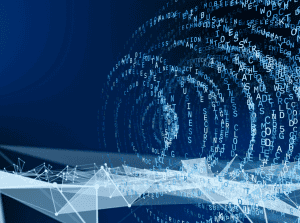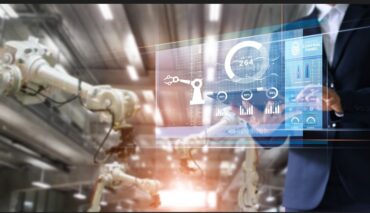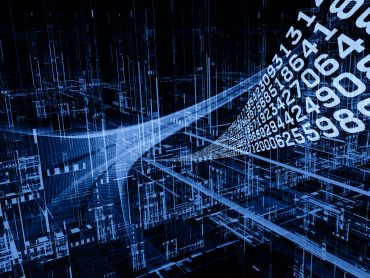
Edge computing, often enabled by 5G, represents the next force shaping enterprise computing in the year ahead.
In McKinsey’s annual analysis of the trends shaping computing for the year 2022, two essential technologies stand out: 5G and edge. The report’s authors looked at the technologies that promise to be most impactful in terms of delivering greater innovation. These leading technologies were ranked by a “momentum score” based on the growth rate of the technologies underlying the trends, derived from an in-depth analysis of six proxy metrics: patent filings, publications, news mentions, online search trends, private-investment amount, and the number of companies making investments.
![Featured Resource: The Edge Cloud - Enabling an Intelligent Digital World [Download Now]](https://no-cache.hubspot.com/cta/default/8019034/18c058c1-b904-4df7-a2fd-a475402101ca.png)
Process automation and virtualization ranked as the top enterprise computing force to be seen over the coming year. 5G networks and computing followed closely, seen as a global force that will drive new innovations and types of businesses. “With either high-band or low- to mid-band 5G reaching up to 80% of the global population by 2030, enhanced coverage and speed of connections across long and short distances will enable new services such as autonomous driving, business models such as connected services, and next-generation customer experiences such as live virtual reality,” the McKinsey analysts state.
See also: 5G and Edge’s Uniqueness Calls for Adaptive Security
Vertical markets for edge
Implementing the most promising use cases in just four sectors – mobility, healthcare, manufacturing, and retail – could increase global GDP by $1.2 trillion to $2 trillion by 2030, the analysts state. This next generation of wireless connectivity “supports a 100-fold increase in the number of simultaneous connections while improving speed (100 times faster than LTE/4G), latency, and reliability (an improvement from 20 milliseconds to less than one millisecond with 99.99% reliability).”
The rise of 5G-enhanced capabilities represents a convergence of 5G networks and the Internet of Things “to enable faster connectivity across longer distances, with exponentially faster downloads and latency reduced to nearly nothing,” the analysts add. “Far-greater network availability and capability will drive broad shifts in the business landscape, from the digitization of manufacturing — through wireless control of mobile tools, machines, and robots — to decentralized energy delivery and remote patient monitoring.”
The superfast connectivity enabled by 5G also “supports the creation of new services and business models linked to sensor-enabled intelligent products, yields new value-chain offerings – for example, predictive services, augmented-intelligence services,” the analysts state. Such enhanced connectivity also “creates the potential for companies to more seamlessly personalize offerings across channels and create heightened customer experiences. In mobility, for example, IoT sensors and near-global coverage can help manufacturers capture vehicle signals, monitor the condition of each system in the car, and notify the owner to schedule repairs before a breakdown occurs, improving the vehicle’s durability and life span.”
Related to 5G, edge computing represents the next force shaping enterprise computing in the year ahead. This is particularly relevant for new types of applications such as artificial intelligence, the McKinsey analysts note. “The growing computing power of edge devices – generally defined as hardware that controls data flows at the border between two networks – will allow AI to run locally,” they point out. “For instance, as it automates processes and tasks or optimizes warehouses and logistics networks, enabling low latency in these applications while maintaining central control as edge devices connect into cloud-based central nodes.”
Cloud and edge will converge “to help companies move computing power further toward the edge of their networks – enabling them to reach data-hungry devices, with far-less latency, in a greater number of locations that are even more remote and to accelerate decision making with advanced analytics on demand. This trend will help companies boost their speed and agility, reduce complexity, save costs, and strengthen their cybersecurity defenses.”
![Featured Resource: The Edge Cloud - Enabling an Intelligent Digital World [Download Now]](https://no-cache.hubspot.com/cta/default/8019034/18c058c1-b904-4df7-a2fd-a475402101ca.png)







